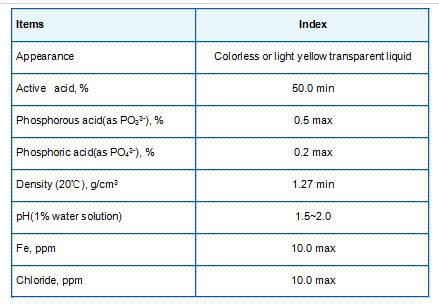Exploring the Applications and Benefits of Polyacrylamide in Various Industries
The Versatile Applications of Polyacrylamide
Polyacrylamide (PAM) is a synthetic polymer that has gained significant attention in various industries due to its unique properties and versatility. This water-soluble polymer is created through the polymerization of acrylamide monomers, resulting in a compound that boasts high molecular weight and excellent gel-forming capabilities. Additionally, PAM can be modified to enhance its specific properties, leading to various applications across multiple domains. This article delves into the uses of polyacrylamide, highlighting its importance in fields such as agriculture, water treatment, and pharmaceuticals, among others.
Agricultural Applications
One of the most significant uses of polyacrylamide is in agriculture, particularly in soil conditioning and irrigation management. PAM enhances water retention in soil, which is particularly beneficial in arid regions where water scarcity is an ongoing challenge. By incorporating polyacrylamide into the soil, farmers can improve its structure and increase its ability to hold moisture, thereby reducing the frequency of irrigation needed. This not only conserves water but also promotes healthier plant growth by providing a more consistent moisture supply.
In addition to moisture retention, PAM can also act as a soil stabilizer. When applied to fields, it can help reduce soil erosion by binding soil particles together, creating a more stable surface that minimizes runoff. This is particularly crucial in agricultural areas prone to heavy rainfall and runoff, where soil erosion can lead to significant crop losses and degradation of land quality.
Water Treatment Applications
The Versatile Applications of Polyacrylamide
The effectiveness of polyacrylamide in water clarification can greatly enhance the efficiency of treatment systems. The polymer facilitates the settling of solids, thereby reducing the burden on subsequent filtration and disinfection processes. Moreover, its effectiveness extends to potable water treatment, where PAM is utilized to improve water quality by removing impurities, turbidity, and harmful microorganisms.
polyacrylamide use

Industrial and Mining Applications
In the industrial sector, polyacrylamide is widely used in various applications, including paper manufacturing, textiles, and oil recovery. In the paper industry, PAM is utilized as a retention agent, helping to improve the acid resistance of paper and enhancing the overall quality of the final product. Its use in textile manufacturing can improve dye uptake, leading to better color consistency and quality in fabrics.
In the mining industry, PAM is used to control dust and improve the efficiency of mineral processing. Its properties allow it to bind fine particles, reducing dust emissions during mining operations while enhancing the recovery of valuable minerals.
Pharmaceutical and Biomedical Applications
Beyond industrial uses, the biomedical and pharmaceutical fields have also recognized the potential of polyacrylamide. Its gel-forming capabilities make it an excellent candidate for drug delivery systems and tissue engineering applications. PAM-based hydrogels can encapsulate medications, providing controlled release over time and improving patient compliance.
Furthermore, polyacrylamide is employed in electrophoresis techniques commonly used in laboratories for DNA and protein analysis. The gel's structural properties allow for effective separation of biomolecules, facilitating research and advancements in molecular biology.
Conclusion
The multifaceted applications of polyacrylamide underscore its relevance in modern industry, agriculture, and healthcare. As a versatile polymer, PAM plays a critical role in enhancing efficiency, improving quality, and promoting sustainability across various fields. Ongoing research into the modifications and applications of polyacrylamide will likely lead to even more innovative uses, solidifying its status as an indispensable material in the global market. As industries continue to seek sustainable solutions to contemporary challenges, polyacrylamide stands out as a key player in driving advancement and innovation.
-
Water Treatment with Flocculant Water TreatmentNewsJun.12,2025
-
Polymaleic AnhydrideNewsJun.12,2025
-
Polyaspartic AcidNewsJun.12,2025
-
Enhance Industrial Processes with IsothiazolinonesNewsJun.12,2025
-
Enhance Industrial Processes with PBTCA SolutionsNewsJun.12,2025
-
Dodecyldimethylbenzylammonium Chloride SolutionsNewsJun.12,2025





